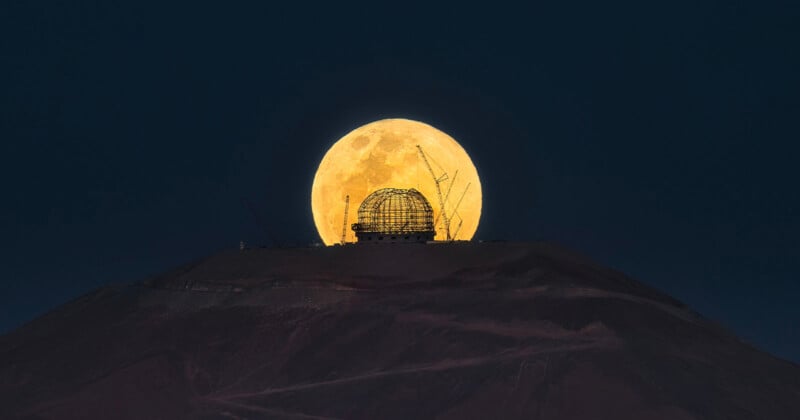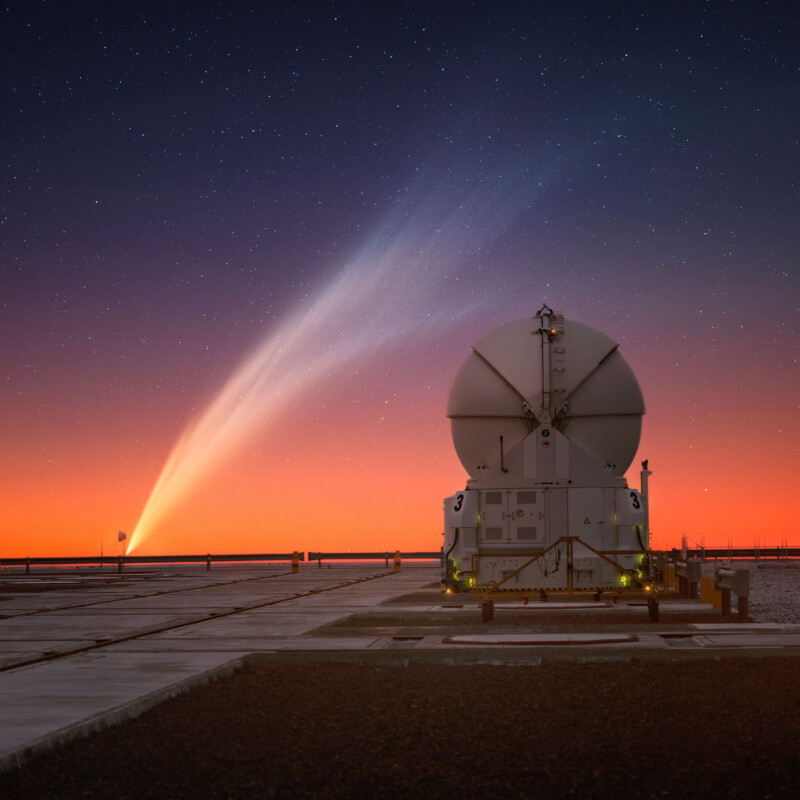Energy Facility Could Spoil Observatory’s View of the Night Sky

A proposed green hydrogen production facility in Chile’s Atacama Desert may significantly impact one of the world’s most important astronomical observatories, a new study has found.
The study, released by the European Southern Observatory (ESO) on March 17, suggests that nighttime sky brightness over the Paranal Observatory could increase by up to 35% — a change that could hinder the work of some of the most advanced telescopes on the planet.
The facility, known as INNA, is planned by U.S. company AES Energy and would cover 7,400 acres (3,000 hectares). Located less than seven miles (11 kilometers) from ESO’s Very Large Telescope (VLT), the plant’s lighting and infrastructure could interfere with the telescope’s ability to observe distant celestial objects, including exoplanets and faraway galaxies.

“The light-pollution figures we are reporting assume that the project will install the most modern available luminaries in a way that minimizes light pollution,” says Andreas Kaufer, ESO’s Director of Operations and lead author of the study.
“However, we are concerned that the inventory of light sources planned by AES is not complete and fit for purpose. In that case, our already alarming results would underestimate the potential impact of the INNA project on the Paranal sky brightness.”
AES Energy, which submitted an environmental impact assessment to Chilean authorities in late December, previously estimated that the plant would cause only a 0.27% increase in sky brightness over Paranal. However, ESO’s findings suggest a much greater disruption.
The VLT, an interferometer made up of four 8.5-meter telescopes, has contributed to groundbreaking discoveries, including the first-ever image of an exoplanet and observations of stars near the Milky Way’s central black hole. The dark skies of Mount Paranal provide optimal conditions for astronomical research, making it one of the least light-polluted sites in the Western Hemisphere.

Space.com reports that the impact of INNA would not be limited to the VLT. The Cherenkov Telescope Array Observatory, currently under construction just three miles (5 kilometers) from the proposed site, is expected to experience a 50% increase in light pollution. Additionally, the Extremely Large Telescope (ELT), which will be the world’s largest optical telescope when completed later this decade, could see the sky above it brighten by 5%—enough to interfere with the high-precision observations it is designed to carry out.
Beyond light pollution, ESO’s study also highlights the potential for atmospheric disturbances caused by the facility’s wind turbines. These disturbances could increase air turbulence, degrading the clarity of astronomical observations by up to 40%.
“Taken together, these disturbances seriously threaten the current and long-term viability of Paranal as a world leader in astronomy, causing the loss of key discoveries about the universe and compromising Chile’s strategic advantage in this area,” says Itziar de Gregorio-Monsalvo, ESO’s representative in Chile. “The only way to save Paranal’s pristine skies and protect astronomy for future generations is to relocate the INNA complex.”
AES Energy says the project will follow strict lighting regulations set by Chile’s Ministry of the Environment to minimize light pollution. Nevertheless, ESO intends to submit its findings to Chilean authorities as part of the Citizen Participation Process evaluating the INNA project’s environmental impact.
Paranal remains one of the few locations on Earth where light pollution is minimal, offering an unparalleled window into the universe.
“We build the largest and most powerful telescopes, in the best place on Earth for astronomy, to enable astronomers worldwide to see what no one has ever seen before,” adds Gregorio-Monsalvo. “Light pollution from projects like INNA doesn’t just hinder research, it steals our shared view of the universe.”